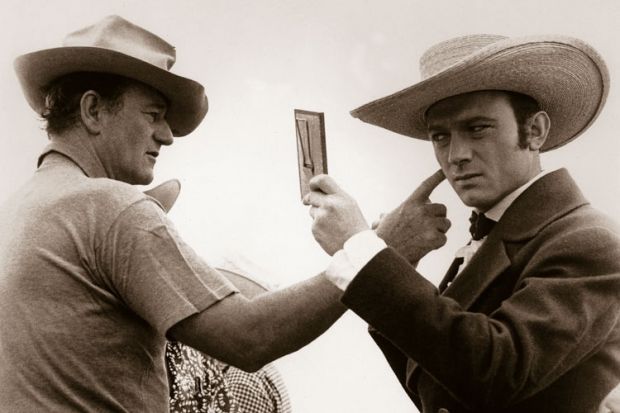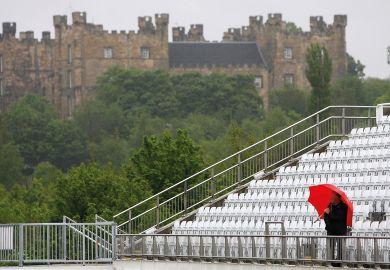Source: Kobal
High standards: providers demanding good grades gain most under new regime
Volatile student recruitment in England has benefited more selective universities and “disadvantaged” others with lower entry standards, England’s funding council has said.
A report on trends from the Higher Education Funding Council for England shows that in the past three years 19 universities have increased undergraduate recruitment by more than 10 per cent while 28 have shrunk at the same rate. It also says the number of part-time undergraduate entrants fell by 46 per cent between 2010-11 and 2013-14.
And Hefce reports for the first time results from its survey of student numbers at private providers. In 2012-13, there were 25,000 undergraduates who could access public-backed student support, and that grew to 60,000 in 2013-14, according to providers’ returns. Those students are “mainly enrolled” on sub-degree level higher national certificate and higher national diploma courses, Hefce adds in the report, Higher Education in England 2014: Analysis of Latest Shifts and Trends.
The report provides the first actual student numbers for 2013-14, based on universities’ returns to the Higher Education Students Early Statistics Survey. The number of full-time undergraduate entrants grew by 8 per cent in 2013-14, to 378,000, Hefce says.
Young people from disadvantaged areas were “around 9 per cent more likely to be accepted for entry in 2013 than they were in 2012”, Hefce notes of Ucas data. “Present indications are that changes to the fee regime have not had a negative impact on widening access for young entrants to higher education.”
Not all institutions gained in the shift to the £9,000 fee system and changes to student number controls. “The increase in full-time undergraduate entrants in 2013-14 at 19 higher education institutions and 46 further education colleges was more than 10 per cent compared with 2010-11,” Hefce says.
“Declines of more than 10 per cent were seen at 28 higher education institutions and 17 further education colleges,” it adds. Universities expanding “tended to be those where students have high average [entry] tariff scores, or to be specialist institutions”; at most of those declining, “entrants had low or medium average tariff scores”.
“Changes in recruitment trends…appear to have favoured particular types of institution and disadvantaged others,” Hefce says.
Hefce also reports that numbers of home and European Union students entering modern foreign languages courses fell 22 per cent between 2010-11 and 2012-13 and acceptances are “now lower than at any point in the previous decade”.
Register to continue
Why register?
- Registration is free and only takes a moment
- Once registered, you can read 3 articles a month
- Sign up for our newsletter
Subscribe
Or subscribe for unlimited access to:
- Unlimited access to news, views, insights & reviews
- Digital editions
- Digital access to THE’s university and college rankings analysis
Already registered or a current subscriber? Login





